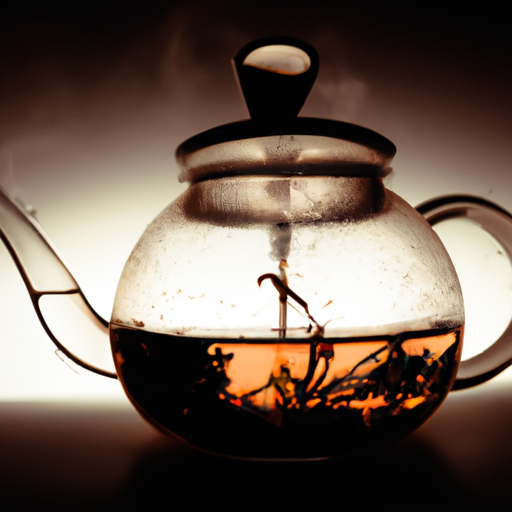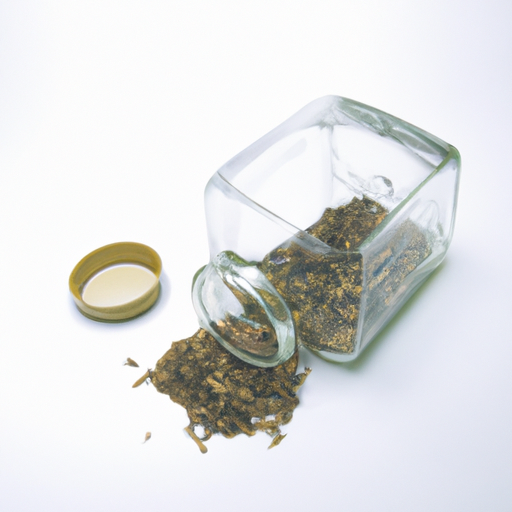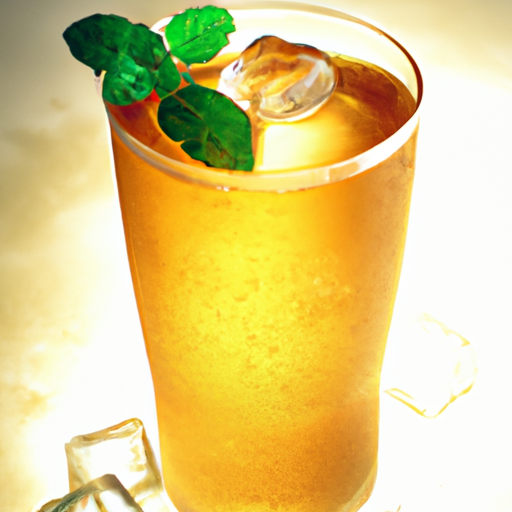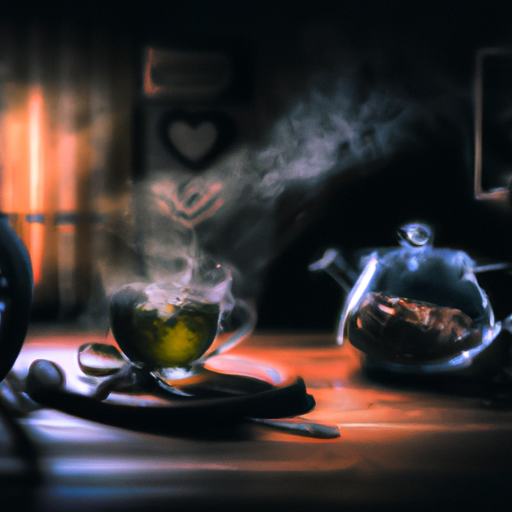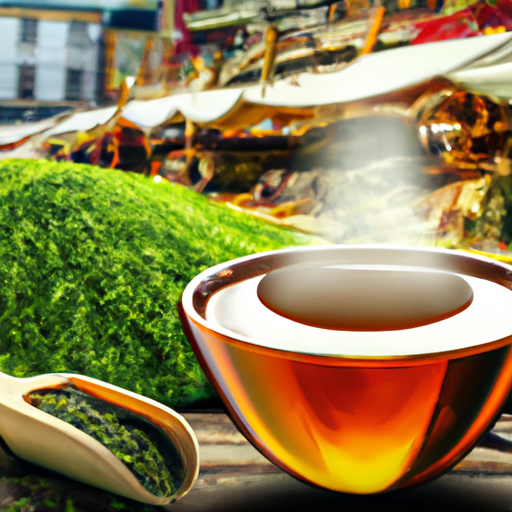I recently stumbled upon the delightful realm of roasted barley tea, and I’m totally captivated! This tea, with its unique nutty and subtly sweet flavor, is highly popular across various East Asian nations and is thought to offer a multitude of health advantages.
But one question I had when I first started brewing this tea was how long to steep it for maximum flavor and health benefits.
After some research and experimentation, I’ve learned that the steeping time for toasted barley tea can vary depending on the type of barley and personal preference. However, there are some general guidelines to follow to ensure the best flavor and benefits from this tea.
In this article, I will share my findings and tips for steeping the perfect cup of toasted barley tea. So grab your favorite mug and let’s get brewing!
Key Takeaways
- The recommended steeping time for toasted barley tea is around 5 to 10 minutes.
- Cold water requires a longer steeping time to extract enough flavor.
- If you prefer a stronger flavor, you can increase the steeping time by 1-2 minutes.
- Be careful not to oversteep the tea as it can lead to a bitter taste.
Understanding Toasted Barley Tea
You’ll want to understand the nuances of toasted barley tea before deciding how long to steep it. Toasted barley tea, also known as mugicha, is a popular beverage in Japan and Korea. It’s made from roasted barley grains and has a nutty, slightly sweet flavor.
One of the health benefits of toasted barley tea is that it’s caffeine-free, making it a great alternative to coffee or traditional tea. It’s also believed to aid in digestion, regulate blood sugar levels, and promote hydration.
In addition to its health benefits, toasted barley tea has been used in traditional medicine for centuries, particularly in Asian cultures. When choosing the right barley for your tea, look for high-quality, organic barley grains. The best barley for toasted barley tea is hulled barley, which has had its outer shell removed.
This type of barley is more flavorful and nutritious than pearl barley, which has been polished to remove the outer layer. By understanding the health benefits and traditional uses of toasted barley tea, you can choose the right barley and steep it for the optimal amount of time to enjoy its full flavor and benefits.
Choosing the Right Barley
When it comes to choosing the right barley for making tea, there are a few key points to keep in mind. First, there are different types of barley, each with its own unique flavor and characteristics.
Second, it’s important to select the best quality barley possible to ensure a delicious and satisfying cup of tea.
Finally, taking the time to learn about different varieties and grades of barley can help you make more informed decisions and create a truly exceptional tea experience.
Types of Barley
Barley cultivation and processing have led to the development of many different types of barley, each with their own unique flavor profile. Whether you’re looking for a nutty, earthy taste or a sweeter, more delicate flavor, there’s a barley variety out there that will suit your taste buds. Here’s a table of some of the most popular types of barley and their flavor profiles:
| Type of Barley | Flavor Profile | Best Uses |
|---|---|---|
| Hulled Barley | Nutty, earthy, chewy | Soups, stews, salads |
| Pearl Barley | Mild, slightly sweet | Soups, stews, casseroles |
| Quick-Cooking Barley | Delicate, slightly sweet | Salads, pilafs, stir-fries |
| Scotch Barley | Rich, nutty, chewy | Soups, stews, casseroles |
| Black Barley | Smoky, nutty, chewy | Salads, pilafs, stir-fries |
As you can see, there’s a barley variety for every palate and every dish. But how do you choose the best quality barley for your tea?
Selecting the Best Quality
To ensure exceptional tea quality, it’s crucial to carefully assess the barley’s texture and aroma before making your purchase. When selecting the best quality toasted barley tea, look for grains that are plump, dry, and have a rich golden color. The grains should also have a pleasant, toasty aroma. Avoid barley that is discolored, uneven in size, or has a musty smell.
Not only does selecting the best quality barley ensure a better tasting tea, but it also provides additional health benefits. High-quality barley contains antioxidants and nutrients that promote heart health, aid in digestion, and provide a natural source of energy.
Additionally, choosing the right brewing techniques can enhance the tea’s flavor and maximize its health benefits. In the next section, we’ll discuss how to prepare the tea leaves to achieve the perfect cup of toasted barley tea.
Preparing the Tea Leaves
First things first, you gotta grab your tea leaves and get ready to brew a delicious cup of toasted barley tea, but don’t worry it’s a piece of cake! Before steeping, it’s important to prepare the tea leaves properly so that they can release their full flavor potential.
Toasted barley tea is made by roasting barley grains, which infuses flavors into the tea leaves. The roasting process also gives the tea a nutty aroma and a slightly sweet taste that makes it unique.
To prepare the tea leaves, start by measuring out the desired amount of tea. A general rule of thumb is to use one tablespoon of tea leaves per cup of water. Next, heat a non-stick pan over medium-high heat and add the tea leaves. Roast the tea leaves for about 2 to 3 minutes while stirring occasionally. This will help release the flavors and aromas of the tea. Be careful not to over-roast the tea leaves, as this can result in a bitter taste.
Now that the tea leaves are properly prepared, it’s time to steep them in water. But, before jumping into the water temperature, it’s important to note that the recommended steeping time for toasted barley tea is around 5 to 10 minutes. This will allow the tea to fully infuse its flavors and aromas into the water.
So, let’s move on to the next step and talk about the ideal water temperature for steeping toasted barley tea.
Water Temperature
Now that you’ve got your tea leaves ready, it’s time to talk about the perfect water temperature for brewing a delicious cup of toasted barley tea.
The boiling vs. cold water temperature debate has been a popular topic among tea enthusiasts. Some argue that boiling water extracts more flavor from the leaves, while others prefer to use cold water to prevent bitterness. Effects on flavor can also vary depending on the water temperature and steeping time.
When using boiling water, steeping time should be shorter to prevent bitterness. On the other hand, cold water requires a longer steeping time to extract enough flavor. It’s important to find the right balance between water temperature and steeping time to achieve the desired taste.
The water temperature plays a crucial role in the taste of toasted barley tea. Depending on personal preference, one can choose to use boiling or cold water. However, it’s important to keep in mind that the steeping time varies depending on the water temperature.
In the next section, we will delve deeper into the steeping time for toasted barley tea.
Steeping Time
Get ready to experience the perfect cup of toasted barley tea by finding the ideal balance between the length of time you let your tea steep and the water temperature you choose. When it comes to steeping time, there are several factors that can affect the flavor of your tea. These include the type and quality of the tea leaves, the water temperature, and the brewing vessel.
To help you achieve the optimal flavor, here are some tips for determining the perfect steeping time for your toasted barley tea. First, start with a steeping time of 2-3 minutes and adjust accordingly. If you prefer a stronger flavor, you can increase the steeping time by 1-2 minutes. However, be careful not to oversteep the tea as it can lead to a bitter taste.
Check out the table below for a quick reference guide on the recommended steeping time for different types of toasted barley tea:
| Type of Toasted Barley Tea | Steeping Time |
|---|---|
| Premium Barley Tea | 2-3 minutes |
| Roasted Barley Tea | 2-3 minutes |
| Barley and Corn Tea | 3-4 minutes |
The steeping time plays a crucial role in achieving the perfect cup of toasted barley tea. By taking into consideration the factors affecting steeping time and following these tips, you can ensure that your tea is flavorful and refreshing. In the next section, we will discuss different brewing methods to help you take your toasted barley tea experience to the next level.
Brewing Methods
One way to enhance the flavor of your toasted barley tea is by experimenting with different brewing methods. Alternative brewing methods can unlock different tea flavor profiles, adding depth and complexity to your experience. Here are three methods to try:
-
Cold Brew: This method involves soaking the tea leaves in cold water for an extended period of time, usually 6-12 hours. This results in a smoother, less bitter flavor with more subtle notes of the toasted barley.
-
Steep with Citrus: Adding a slice of lemon or orange to your tea while it steeps can add a bright, acidic note to the flavor profile. This can complement the nutty, earthy flavor of the toasted barley.
-
Double Steep: Instead of throwing out your tea leaves after the first steep, try steeping them again for a stronger, richer flavor. This method can bring out more of the toasted, nutty notes in the tea.
Experimenting with different brewing methods can help you find the perfect way to enjoy your toasted barley tea. If you’re looking for even more flavor enhancements, there are other ingredients you can add to your tea for a unique experience.
Other Flavor Enhancements
When it comes to enhancing the flavor of my toasted barley tea, I’ve found that adding a touch of honey or sweetener can really make a difference. It brings out the natural sweetness of the roasted barley and adds a depth of flavor that’s truly delicious.
I also enjoy experimenting with adding a squeeze of lemon or other citrus for a refreshing twist on this classic tea.
Honey or Sweeteners
If you’re looking to add some sweetness to your toasted barley tea, try using honey or your preferred sweetener of choice. Not only does honey provide a natural alternative to sugar, but it also offers numerous health benefits.
Some benefits of honey include its antibacterial properties and ability to soothe sore throats. Additionally, honey has a lower glycemic index than sugar, meaning it won’t cause a spike in blood sugar levels like sugar does.
Other sweeteners, such as stevia or agave, can also be used to sweeten your tea without the added calories of sugar.
To enhance the flavor of your toasted barley tea even further, consider adding a squeeze of lemon or other citrus. This can provide a refreshing twist to your tea, while also adding some extra vitamin C to your drink.
Adding Lemon or Other Citrus
Enhancing the flavor of your toasted barley tea can be achieved by adding a squeeze of lemon or other citrus. Not only does it provide a refreshing twist to your drink, but it also offers an extra dose of vitamin C.
Citrus fruits like lemons, limes, and oranges also contain antioxidants and other nutrients that are beneficial for your health. The best time to add citrus to your toasted barley tea is after it has been steeped and cooled down.
This will ensure that the acidity of the citrus does not interfere with the steeping process and that the nutrients are not lost due to high temperatures. Adding a slice or two of lemon or other citrus is a simple way to add a burst of flavor and nutrition to your toasted barley tea.
Transitioning to the next section, it’s important to know how to properly store your toasted barley tea to maintain its freshness and flavor.
Storing Toasted Barley Tea
When it comes to storing toasted barley tea, there are two key points to consider: shelf life and storage containers. As someone who loves this flavorful tea, I always prioritize proper storage to ensure that my supply stays fresh for as long as possible.
In this discussion, I’ll share my knowledge on these two important aspects of storing toasted barley tea.
Shelf Life
You’ll want to keep in mind that the shelf life of toasted barley tea can vary depending on storage conditions and packaging, but as the old saying goes, ‘when in doubt, throw it out.’
To ensure maximum freshness and flavor, it’s recommended to consume the tea within a year of purchase. However, there are a few tips you can follow to extend its shelf life:
- Store in a cool, dry place away from direct sunlight.
- Keep the tea in an airtight container to prevent moisture from seeping in.
If the tea starts to lose its flavor or becomes stale, don’t throw it out! There are many uses for stale tea, such as using it to flavor soup or as a natural fertilizer for plants.
To test if the tea is still good to drink, give it a sniff. If it smells musty or moldy, it’s time to toss it.
When it comes to preserving the freshness of toasted barley tea, it’s important to remember that proper storage is key.
In the next section, we’ll discuss the best types of storage containers to use for your tea.
Storage Containers
Now that we know how long toasted barley tea can last, it’s important to consider the best storage containers for preserving its quality. As for me, I prefer using glass containers to store my toasted barley tea, as they’re non-reactive and don’t absorb any flavors or odors. Plus, they’re easy to clean and maintain.
However, plastic alternatives can also be used as storage containers for toasted barley tea. When choosing the right container, make sure to look for ones that are BPA-free and food grade. Additionally, avoid using containers made of materials that aren’t heat-resistant, as they may warp or melt when exposed to hot tea.
With proper storage, toasted barley tea can retain its flavor and aroma for a long time, providing you with a delicious and healthy beverage anytime you want.
Now that we’ve covered the importance of proper storage for toasted barley tea, let’s move on to some popular recipes that you can make using this tea as a base.
Popular Toasted Barley Tea Recipes
I love trying out different recipes with toasted barley tea, also known as Mugicha. Two of my favorites are the refreshing Iced Mugicha and the comforting Mugicha Latte.
Aside from its delicious taste, Mugicha also has several health benefits, such as aiding digestion and promoting relaxation. I also enjoy experimenting with steeping time and adding flavor enhancements like lemon or mint to create my own unique twist on this classic tea.
Iced Mugicha
Savor the refreshing taste of iced Mugicha by steeping the toasted barley tea for at least 2 hours and serve it over ice for a cool and satisfying drink. This traditional Japanese tea is not only delicious, but also has many health benefits. Drinking iced mugicha can help with digestion, lower blood pressure, and even reduce stress. It’s a perfect drink for hot summer days or anytime you need a refreshing pick-me-up.
To make iced mugicha, simply steep 1/4 cup of toasted barley in 4 cups of cold water for at least 2 hours, or overnight for a stronger flavor. Strain the tea and serve over ice, with a slice of lemon or a sprig of mint for added freshness. Another great way to enjoy iced mugicha is to add a splash of fruit juice, such as grapefruit or peach, for a sweet and tangy twist. With its versatile flavor and numerous health benefits, iced mugicha is sure to become a new favorite in your beverage rotation.
Speaking of new favorites, have you ever tried a mugicha latte?
Mugicha Latte
Indulge in the creamy goodness of a Mugicha latte, a fusion of the traditional Japanese tea and frothy steamed milk. This drink is perfect for those who want to try something new and exciting.
Mugicha latte variations are endless; you can add different flavors like vanilla, caramel, or even matcha powder. The toasty and nutty flavor of Mugicha tea blends perfectly with the sweetness of the milk and the added flavorings.
Compared to a traditional latte, Mugicha latte has a unique taste that’s earthy and refreshing. It’s also a healthier option because it has no caffeine and contains antioxidants, which can help boost your immune system.
So why not try making a Mugicha latte at home and enjoy the creamy, delicious taste while reaping the health benefits?
Health Benefits
Get ready to boost your immune system with a Mugicha latte, a creamy and delicious fusion of Japanese tea and frothy milk that contains antioxidants. But did you know that the barley tea used in this latte can also aid in weight loss and provide benefits for digestion?
Barley tea is low in calories and can help to suppress appetite, making it a great addition to a weight loss diet. Additionally, it contains dietary fiber that can help to regulate digestion and prevent constipation. Aside from its weight loss and digestive benefits, barley tea also contains antioxidants that can help to protect the body against free radicals.
These antioxidants can also help to lower inflammation and reduce the risk of chronic diseases such as heart disease and cancer. With all these benefits, it’s no wonder that barley tea is a popular choice in Japan and other parts of Asia.
So why not try incorporating it into your daily routine and see how it can improve your health? As you start experimenting with steeping time and flavor enhancements, you’ll discover the many ways that barley tea can be enjoyed. From a simple mug of hot tea to a refreshing iced tea, there are endless possibilities.
So don’t be afraid to get creative and discover all the benefits that barley tea has to offer!
Experimenting with Steeping Time and Flavor Enhancements
When experimenting with steeping time and flavor enhancements, it’s important to find the perfect balance to bring out the best taste in your Mugicha latte. One way to enhance the flavor of your toasted barley tea is by adding spices, such as ginger or cinnamon. These spices not only add a unique taste, but they also have their own health benefits, such as aiding digestion and reducing inflammation.
Another way to experiment with Mugicha is by trying a cold brew option. By steeping the tea leaves in cold water for a longer period of time, you can create a refreshing and light beverage that’s perfect for hot summer days.
To make a cold brew Mugicha, simply add the tea leaves to a pitcher of cold water and let it steep in the fridge for 6-12 hours. You can also add fruit slices or herbs, such as mint or lemon, for an extra burst of flavor.
Frequently Asked Questions
Is toasted barley tea gluten-free?
Yes, toasted barley tea isn’t gluten-free as barley contains gluten. However, there are alternatives to barley tea for those who follow a gluten-free diet.
Some options include teas made from roasted corn, roasted brown rice, or roasted buckwheat. When it comes to brewing toasted barley tea, it’s important to use hot, not boiling water and steep for no more than 3-5 minutes to avoid bitterness.
Additionally, you can experiment with adding honey or lemon to enhance the flavor.
Can I reuse the tea leaves after steeping?
Yes, you can definitely reuse the tea leaves after steeping toasted barley tea. I know some people might be hesitant to do so, thinking that the flavor won’t be as strong or that it might be harmful to consume. However, as long as you store the used leaves properly in an airtight container in the fridge, you can reuse them for up to two more steepings.
Just keep in mind that the steeping time will need to be adjusted slightly for each subsequent use. For the first steeping, I recommend steeping the tea for around 5-7 minutes to get the full flavor. For the second steeping, you can increase the steeping time by a minute or two, and for the third steeping, you can increase it by another minute or two.
This way, you can get the most out of your toasted barley tea leaves and enjoy multiple cups of delicious, gluten-free tea.
What are the health benefits of drinking toasted barley tea?
Toasted barley tea, also known as mugicha, has numerous health benefits that make it a great addition to any diet. This tea is naturally caffeine-free and low in calories, making it an excellent alternative to sugary or caffeinated beverages.
Drinking toasted barley tea regularly can help to improve digestion, boost immunity, and reduce inflammation in the body. Additionally, it’s been shown to have a calming effect on the mind and body, making it a great choice for those looking to reduce stress levels.
When it comes to steeping time, it’s best to let the tea steep for at least 5-10 minutes to allow the full flavor to develop. There are also many variations of this tea that can be made by adding ingredients such as ginger, lemon, or honey for added flavor.
Overall, toasted barley tea is a delicious and healthy beverage that can be enjoyed all year round.
How long can I store toasted barley tea before it goes bad?
As someone who loves toasted barley tea, I always make sure to store it properly to ensure it doesn’t go bad. When it comes to storing methods, the best way to keep toasted barley tea fresh is to store it in an airtight container in a cool, dry place. This will help prevent any moisture from getting inside the container and causing the tea to spoil.
As for shelf life, properly stored toasted barley tea can last for up to six months. However, it’s important to note that the quality and flavor of the tea may start to deteriorate over time, so it’s best to consume it within the first three months.
Overall, with proper storage and consumption within a reasonable amount of time, you can enjoy delicious toasted barley tea for months to come.
Can I add milk or sugar to my toasted barley tea?
Yes, you can definitely add milk or sugar to your toasted barley tea to create variations in taste. However, it’s important to note that the benefits of drinking plain toasted barley tea are numerous. It’s a great source of antioxidants, helps with digestion, and contains no caffeine.
Adding milk or sugar may detract from these benefits, so it’s recommended to enjoy the tea plain for maximum health benefits. That being said, adding a splash of milk or a bit of honey can create a delicious and comforting beverage.
Remember, the key is moderation and balance in everything, including toasted barley tea variations.
Conclusion
In conclusion, steeping toasted barley tea is a simple and enjoyable process that anyone can do at home. You can create a delicious and healthy beverage that will please your taste buds and nourish your body with the right ingredients, temperature, and steeping time. Whether you prefer a strong and robust flavor or a light and refreshing taste, you can customize your tea to your liking and experiment with different brewing methods and flavor enhancements.
As the saying goes, "Variety is the spice of life,"and toasted barley tea is a perfect example of this. It has a diverse range of flavors and health benefits, which is why it has been a staple in many cultures for centuries. So, go ahead and try it out for yourself. Discover the wonders of toasted barley tea. Who knows, it might just become your new favorite drink!

